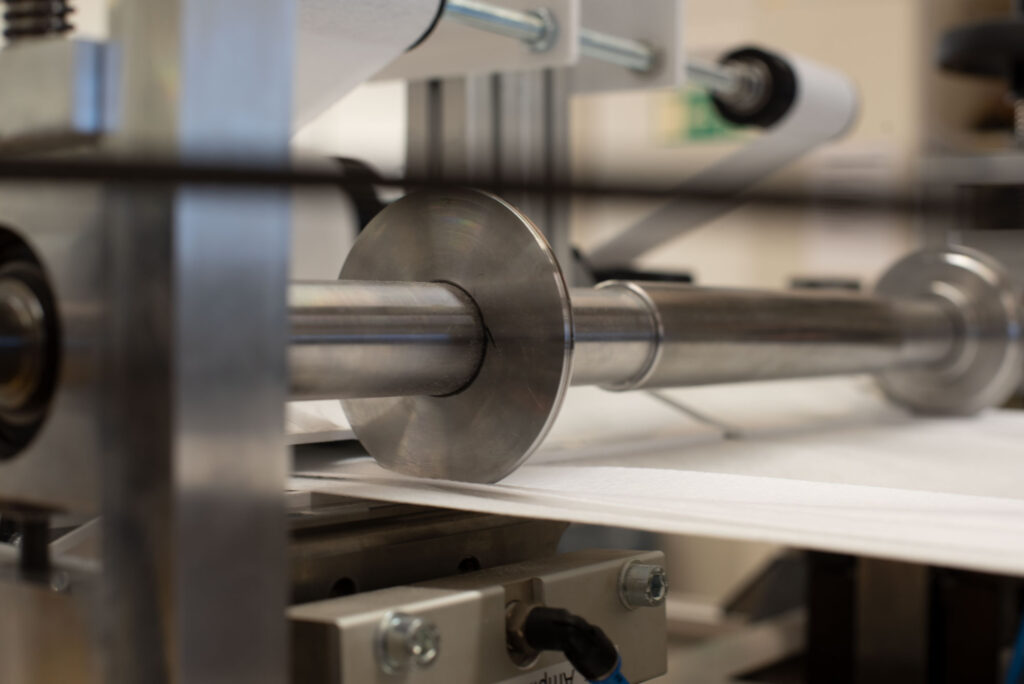
Joining and cutting with ultrasonic technology
- No Comments
Probably the best known and most frequently used welding processes are MIG/MAG welding and TIG welding. These methods work only conditionally or not at all for plastics. For joining plastics, we use ultrasonic technology in our systems. In this article, we will introduce you in more detail to what this technology is all about.
Ultrasonic welding is a joining technology that enables thermoplastics and metallic materials to be joined. The welding process belongs to the group of friction welds, as high-frequency mechanical vibrations in metals cause the joining partners to interlock and hook together, leading to heating between components as a result of molecular and interfacial friction.
How does ultrasonic welding work?
When ultrasound strikes a material, such as plastic, the molecular chains within it are set into vibration. The molecules begin to move and rub against each other, creating energy called frictional heat. In the case of thermoplastics, this causes them to start melting. Ultrasonic welding makes use of precisely this principle. A typical ultrasonic welding system consists of three main components, the generator, the oscillating structure and a drive module.
During the welding process, an ultrasonic generator produces the necessary voltage of several hundred volts and ultrasonic waves with frequencies of 15 – 70 kHz. With the amplitude of 5 – 50 µm, the vibrations are guided into the component by a welding tool called sonotrodes. Different applications require different designs of sonotrodes, which are usually made of steel, aluminum or titanium. The vibration generates frictional heat, resulting in melting. Additional pressure can then be used to join plastics together. The counterpart to the welding tool is usually a roller provided with a surface structure, also called an anvil. This surface structure is called embossing – these can be dots, lines or logos, depending on the task. The energy is focused at the raised embossing points of the anvil – this is where the welding spots are created in the material that is passed between the welding tool and the anvil roller.
The process is the fastest and also the most cost-effective method used today to join plastic parts and non-ferrous metals. Major advantages of ultrasonic welding are that it does not use adhesives, fasteners or solvents, which makes it very environmentally friendly and cost-effective to use.
Where is ultrasonic welding used?
In principle, ultrasonics can weld most thermoplastics. In addition to plastics, various non-ferrous metals such as aluminum, nickel, brass and copper are also suitable for ultrasonic welding. Well-known everyday examples are remote controls and children’s toys, or coffee capsules or airtight packed lettuce. The use of ultrasound is also very efficient in the field of nonwovens, such as diapers or even FFP2 masks.


